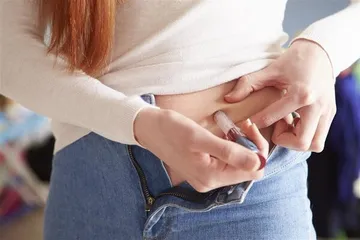Common food weight and unit conversion table
Common fruits:
One apple: 260g g 117 calories
A pear: 250 g g 92.5 card

One banana: 125g 113.75 calories
One orange: 150g g 76.5 calories
One peach: 200g g 78 calories
One papaya: 900g g 40.5 calories
Common ingredients:
One egg: 55g 85.8 calories
One egg yolk: 20 grams 52.6 calories
One protein: 35 grams and 21 calories
One duck egg: 65g 117 calories
One steamed bun: 55g 122.65 calories
One steamed bun: 150g g 349.5 calories
One dumpling: 24g 57.6 calories
One oil stick: 70g g 270.2 calories
One spoonful of rice (eaten normally): 10g g 11.5 calories
One chopstick rice (eaten normally): 12g 13.8 calories
A small bowl of rice (flattened): 250- 300g g 287.5 kcal ~345 kcal
Fast food box, box of rice (pressed): 250g g 287.5 calories
Common foods:
One spoonful of honey: 8g g 25.68 calories
One spoonful of cereal: 2g g 7.16 calories
A small bar of Nescafe coffee: 13 grams g 5.46 calories
Box of pure milk: 250g g 142.5 calories
A bucket of Master Kong instant noodles: 125g 578.75 calories
One egg yolk pie: 25g 109 calories
One French bun: 20g g 0 calories
One cookie: 10g g 49.5 calories
One soda cracker: 11g 44.88 calories
One shredded coconut ball: 10g g 32 calories
One piece of toast: 35g 91 calories
100 watermelon seeds: 22g 126.06 calories
100 white melon seeds: 23g 135.93 calories
1 tablespoon of peanut butter: 16 grams 95.04 calories
1 cup shredded dried fruit: 114 grams 691.98 calories
1 cup raisin: 170 grams 579.7 calories
50 Peanuts: 31 g 113.77 kcal
Other foods:
Bread crumbs: 1 cup 50 grams 177.5 calories
Butter: 2 tablespoons 30g 215.7 calories
Cheese (rubbed into threads): 1 cup 100g 300 calories
Cocoa powder: 4 tablespoons 25 grams 80 calories
Shredded coconut: 1 cup 75g 500.25 calories
Starch: 4 tablespoons 25 grams 87.75 calories
Dried fruit grains: 1 cup 150- 175g 910.5 calories ~1062.25 calories
Flour: 1 cup 125g 430 calories
Fish gelatin powder: 4 tablespoons 25g 8.75 calories
Nuts: 1 cup 125- 150g 410 kcal ~492 kcal
Oil: 1 tablespoon 15ml 134.85 calories
Rice: 1 cup 200g 692 calories
Salt: 2 tablespoons 25 grams 2.5 calories
White sugar: 1 cup 250g 990 calories
Yellow sugar: 1 cup 125- 150g 486.25 calories ~583.5 calories
Frosting: 1 cup 150g 604.5 calories
Powdered sugar: 1 cup = 130g 514.8 calories
Fine sugar: 1 cup =180~200 grams 720 ~800 calories
Coarse sugar: 1 cup =200~220 grams 784 kcal ~862.4 kcal
Syrup: 1 tablespoon =21 grams 45.78 calories
Sift soft sugar: 1 cup = 130g 514.8 calories
Cocoa powder: 1 tablespoon =7 grams 22.4 calories
Unit conversion:
Weight unit conversion:
1 liang =50 grams
1 jin =500 grams
1 kg =1000 grams
1 pound =454 grams
1 ounce =28.3 grams
Volume conversion:
1 measuring cup =16 tablespoons
1 tablespoon =3 teaspoons =3 teaspoons
1 cup =240 ml =16 tablespoons
1 gallon =4.55 liters
1 liter =1000 ml
1 ml of water =1 gram (Editor in charge: Sweet)